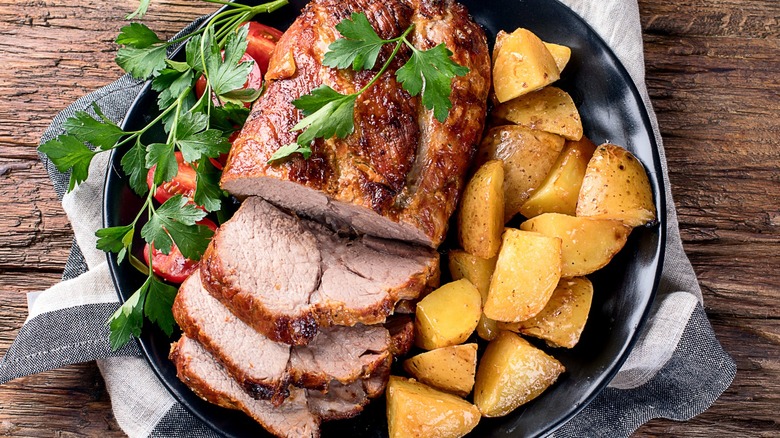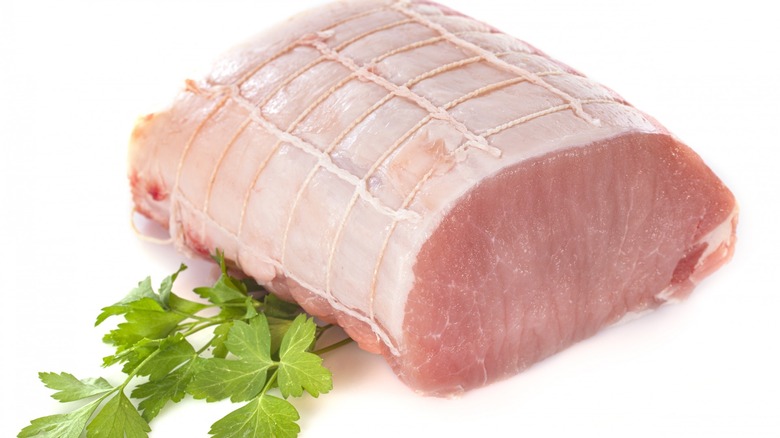The Best Method For Cooking Pork Loin Roast For Optimal Flavor
The best method for cooking pork loin roast is a two-pronged browning and slow-cooking technique that, when adhered to, results in a crisp, well-seasoned outer crust and a tender, light pink center. Far from basic, this juicy back cut is perfectly paired with a generous portion of fresh veggies, such as grilled asparagus or blistered green beans, and a heaping mound of gravy-laden mashed potatoes for a meal to quench any appetite.
Pork loin roast comes from the same primal cut as pork tenderloin but should not be confused or conflated with its sister cut, as their sub-primal characteristics make them distinctly different. Most noticeable is in their appearance. Pork loin roast is upper-back meat — wide and chunky, similar to a beef roast (weighing two to five pounds), and is usually lighter in color (even more so once cooked).
Conversely, pork tenderloin is a boneless, delicately tender cut (considered the filet mignon of the pig). Long and skinny, it's carved from just beneath the loin roast, toward the rear, along the spine. Much the way a chicken tenderloin lays beneath the breast meat, pork tenderloin lays on the underside of a pork loin roast. It's darker in color and has very little fat, usually weighing in at about 1 to 2 pounds. While pork loin roast has a rind of white fat, pork tenderloin has a thin membrane of elastin called "silver skin" that must be removed. But take heed, because these cuts are lower in fat, they can dry out easily if not cooked properly.
How to perfectly cook pork loin — a two-part technique
Now that you understand the differences between pork loin and pork tenderloin, you can ensure you have the right cut for your purposes and apply the correct appropriate times and techniques. The target for a perfectly cooked pork loin is to achieve that coveted crusty outer coating that contrasts so well with a moist and succulent inside. Avoiding overcooking is the main goal, as dry pork is not only a problem flavor-wise but also when it comes to chewing.
First, brown the outside of your roast by quickly searing it in a pan on high heat — this should take just a few minutes per side until it's brown in color and firm to the touch — but not cooked through. This also serves the purpose of locking all the pork's lovely juices inside.
Once browned, transfer your pork loin to the oven for part two: slow cooking. By cooking your pork loin on low heat for a longer period of time, you ensure that the center won't get overcooked. If you have a slow cooker, you can skip the oven and just use that. You'll want the pork to have a faint trace of visible pink left in the center. Aim for a temperature of 145 degrees Fahrenheit per the United States Department of Agriculture (USDA). Then remove it from the pan and allow it to rest for about 10 minutes (where residual heat will continue the process) before you serve it.

